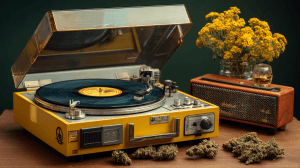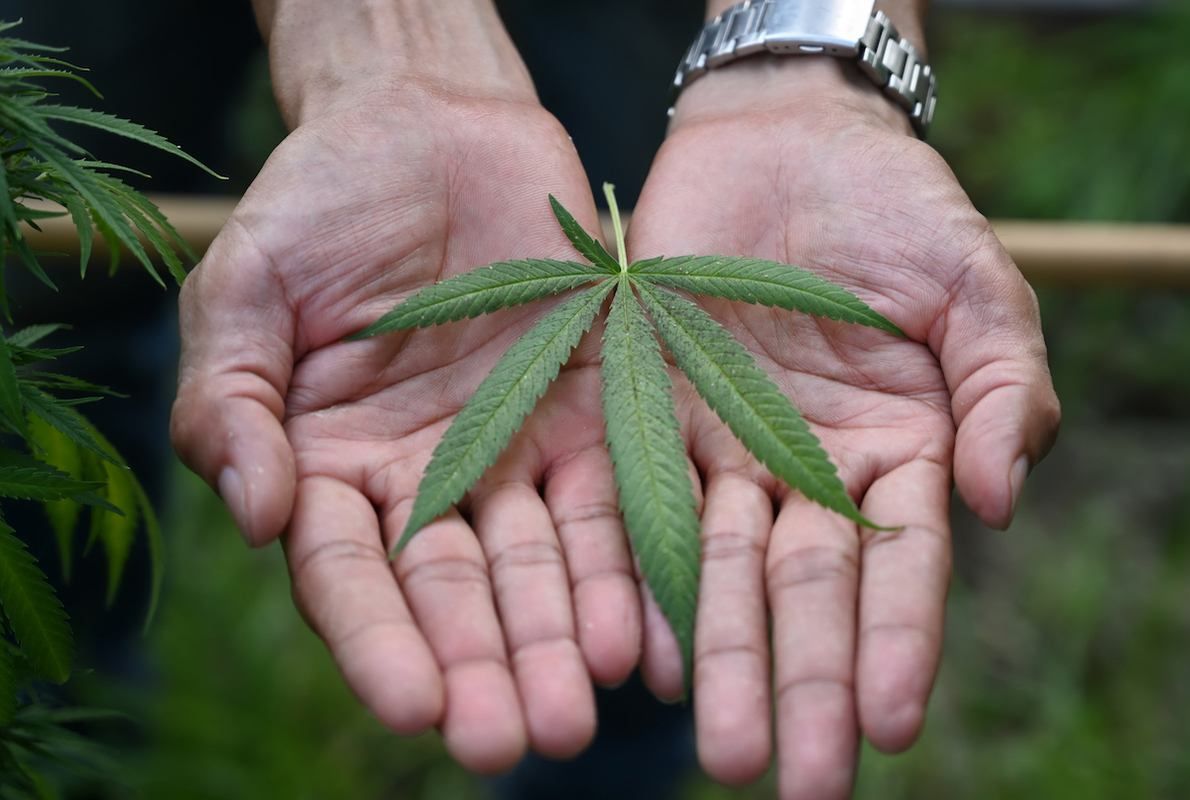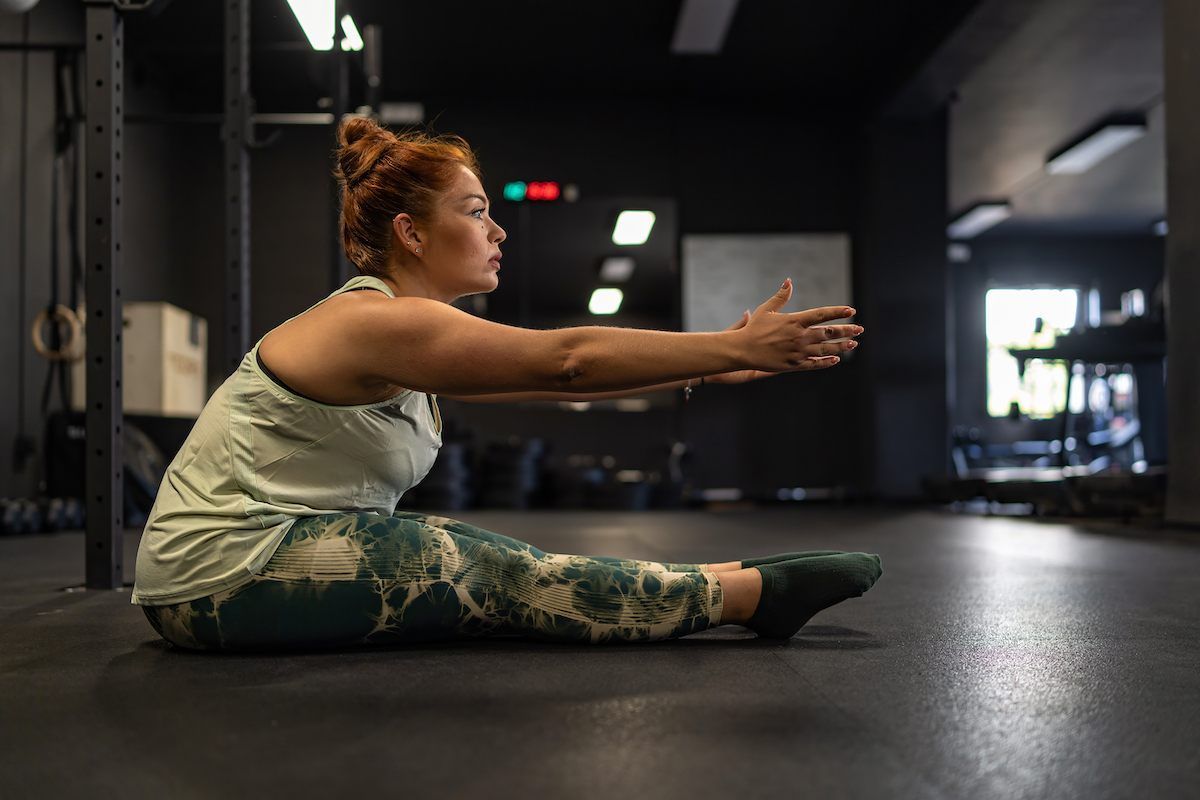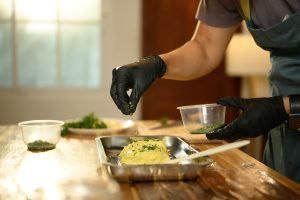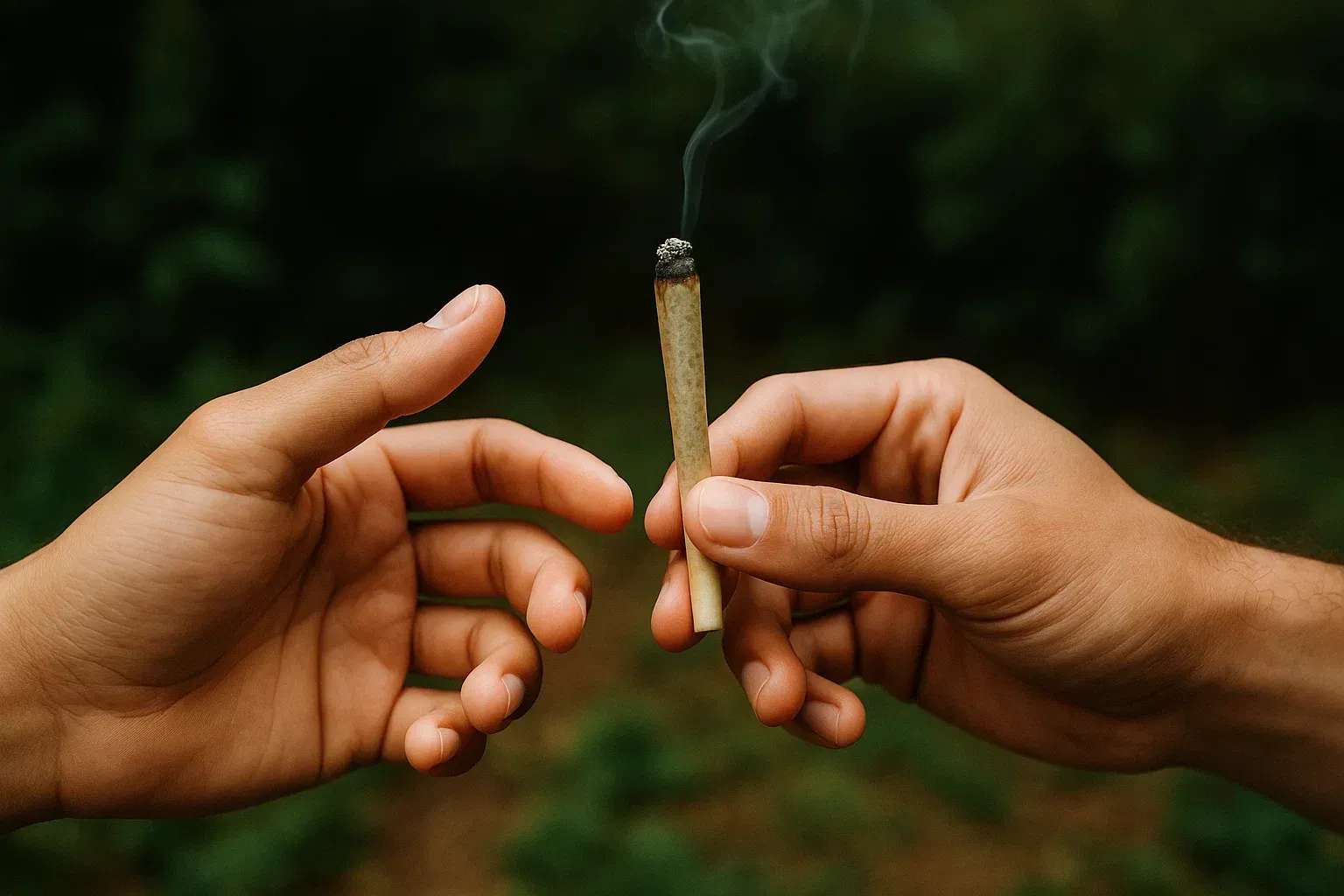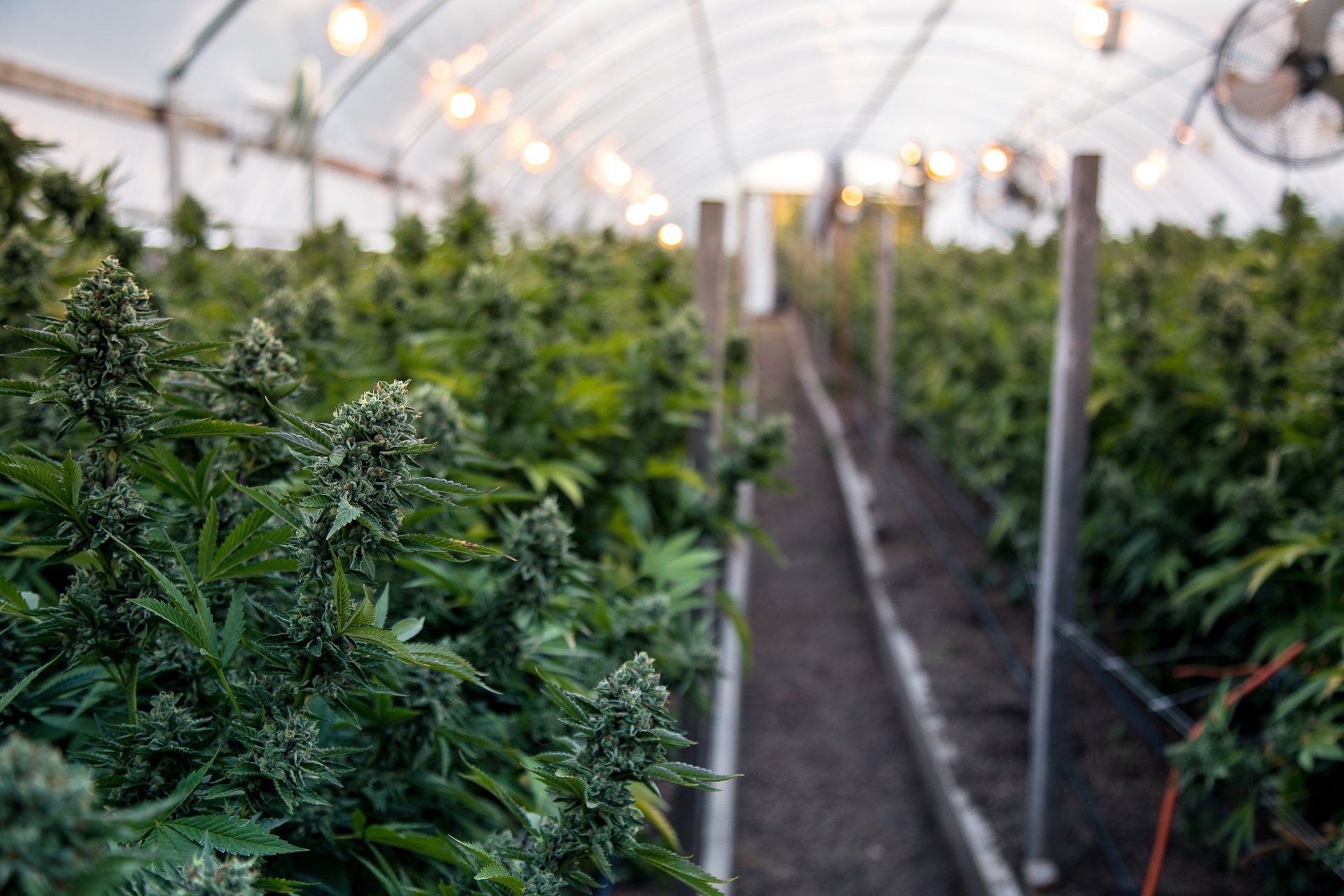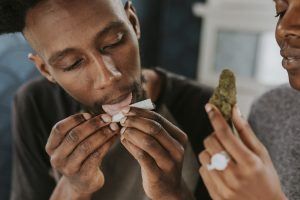What to Cook With Cannabis
Introduction
Cannabis and food are two great things that go great together, each enhancing the experience of the other. Although there are a million different edibles companies out there (and a few fantastic ones,) there’s just something so satisfying and rewarding about making them yourself. The same way kneading bread by hand can help you feel connected to your great-grandparents, baking a big batch of old-fashioned pot brownies connects you to a long line of cannabis connoisseurs.
Back in the day, they would literally just
. Fortunately for us, our relationship with cannabis has gotten more sophisticated over time. Weed has gotten so potent that the old ratio of 1 oz to 1 lb of butter results in cannabutter that’s so strong, it would knock Bluntman down.
We’re going to teach you the right way to make cannabutter, so your fudge tastes like
instead of a
judging booth. In case you don’t dig on dairy, we’ve also got some guidance on making cannaoil and cannabis tinctures.
Make Your Own Edibles
THC, the primary compound of cannabis that gets you high can only bond with your brain after it’s been decarboxylated, heated beyond a certain point to “activate” it. This happens automatically when you smoke or vape—that’s literally why we do that with weed—but when cooking, the process is a little different.
Now, it is true that some THC would be absorbed if you just ground up some nugs and dropped them in the batter, but it would be such a small amount that you’d basically be wasting your purchase. The result of using raw plant matter is food that tastes a lot like weed but doesn’t really get you high.
The more elevated solution to this problem is to extract those cannabinoids from the flower and use them to infuse butter, coconut oil, or alcohol with a predictable quantity of THC. By removing the rest of the plant matter, you end up with a cooking staple that is both more potent and less pungent—and it’s not even that hard.
Read this first!
The most important thing to remember when making cannabis edibles is
clearly label anything with weed in it and keep it away from children.
The last thing you want to happen with your new batch of cannabutter is for someone who doesn’t realize what it is to eat too much of it. That person is going to have a bad time, and you can prevent that by making sure they either know what it is or they can’t get to it. Even if you live alone, you don’t want to discover you used the wrong coconut oil for breakfast when you have a big interview at noon.
A Little Math
Cannabinoids bond with fat—that’s part of how they work inside your body—and that makes butter an ideal medium for cooking edibles. It’s so versatile that you can often use it as a direct substitution for whatever is called for in your recipe. With a little of math, you can whip up a full pound of cannabutter (or 16 oz of coconut or olive oil) and know how many milligrams of THC you’re getting in each serving.
While the old ratio of 1 oz of weed for 1 lb of butter is easy enough to remember, weed is a lot more potent now and the process of decarboxylation means more of the THC ends up in the resulting product. If you’re cooking with Pot Mates flower (and, let’s be honest, it’s really too good to fry up in butter. Try one of those cheap places instead for a cheap deal on some bulk flower) then you’re starting with an average of 25% THC. That means each tablespoon contains
146 mg
of THC—or
48 mg
per serving. The standard recommended starting dose for edibles is just 5–10 mg. No wonder people always get too baked off homemade edibles!
We’re going to double that and shoot for a target that is closer to 10 mg per serving. 5 mg is a great dose for beginners, but if you’re making your own cannabutter, you’ve probably had some experience. You can always start with half a brownie to see how it goes.
If your weed is about 25% THC, we recommend using
¼ oz of flower per 1 lb of butter
. Minor variations in potency mean that your butter might end up a little above or below the target, but 1/4 oz should result in about 35 mg of THC per tablespoon of butter or coconut oil. This is a much more manageable amount, although a whole tablespoon would still likely be enough to send you to sleep for the rest of the day. You can check our math using this handy dandy
Cannabutter
Making cannabutter is super easy and uses stuff you probably already have. The only downside is that there’s not really a stealth way to do it without buying
. Your place is going to smell like weed for most of the day, and that’s something you should know how your housemates/parents/spouse/landlord feels about before you begin.
Decarboxylate
The first step is to grind up your flower (greater surface area for vaporization and absorption) and decarboxylate it in the oven. You can toss everything in an
to help contain the smell, or spread it out on a baking sheet lined with aluminum foil. Bake at 250°F for 30 minutes.
Infuse
The next step is to help the cannabis and the butter get to know each other. Use a saucepan or a pot to boil four cups of water and when the bubbles are really popping, reduce the heat, so the water is just simmering. Add your pound of butter and make sure it melts before dumping in your decarboxylated weed. The weed should float, so check your water level and add more if it’s closer than two inches to the bottom. You don’t want any of it to burn. Stir everything thoroughly.
Now you’re just going to let it sit and simmer for 90 minutes, checking in to give it a quick stir every 15–30 minutes. This part will be stinky regardless of how you decarboxylated (it’s just a fun word to say!) so be prepared to open some windows or turn on a fan for circulation. Your neighbors will know what you’re doing.
Once that’s done, pour it carefully into a bowl using a strainer or cheesecloth to catch the planty bits. It’s still going to be basically boiling, so don’t touch it. Some people like to squeeze the rest of the moisture out of the plant matter at this stage, but we think that makes the butter taste too much like weed. Plus, it gives it a green tint that will color whatever you make with it. Since cannabinoids don’t bond with water, it’s pretty safe to assume that most of the desired compounds are already in the butter in the bowl.
Allow the bowl to cool to room temperature, then move it to the fridge to cool overnight. Once the butter hardens, you’ll be able to pour out the excess water. Presto! Your own batch of cannabutter! Put it in a sealable container, give it
a clear label that it contains cannabis
, and
make sure it’s someplace kids can’t get to it
. Here’s a bonus tip: go ahead and freeze half of it for later, unless you plan to use it all right away. The butter will only stay fresh for about two weeks in the refrigerator, and this way you won’t have to stink up your place again.
You can spread it on toast to make Space Toast, whip up a batch of
, or melt it on a bowl of hot
. It’s butter! Go nuts!
Cannaoil
Cannaoil can be made from coconut oil or olive oil, opening the door to a wide variety of culinary possibilities. Weed
! Cannabis
! Ganja sauté! It uses the same ratio as cannabutter,
¼ oz of flower for 16 oz of oil
, and the process is dead simple.
The first step, as with cannabutter, is to Decarboxylate your flower. Then our favorite method of extraction involves a slow cooker or crock pot and a couple of mason jars.
Fill your crock pot halfway with water separate your coconut oil into two mason jars, splitting your decarboxylated weed between them as well. If you’re worried about smell, you could screw lids on the jars, but you’ll want to open them every half-hour or so to relieve the pressure (a.k.a. “burping” the jars) but you don’t have to.
Let this cauldron bubble for at least 90 minutes, and then carefully strain the jars of oil through cheesecloth or a strainer into two empty jars for long-term storage. Allow them to cool to room temperature before sealing with lids and storing as usual—but
make sure to label them clearly and keep them out of reach of kids.
We can’t emphasize that enough.
Cannabis Tincture
This one is even simpler, yielding a potent tincture that you can take directly—just a drop or two under the tongue—or by infusing into any number of tasty beverages. However, everything we said about
goes double if you’re combining cannabis with alcohol, so if you’re going to use this tincture in a tasty alcoholic beverage, you need to be twice as safe about it.
All you need is an eighth of cannabis and enough food grade high-proof alcohol (like Everclear) to cover it in a container. Mason jars work great. Decarboxylate your cannabis as usual before covering with alcohol in the jar, then store it in a cool dark place for 21 days. Try to shake it up about once a day, so you get all the little bits.
After three weeks, you just strain the resulting tincture through a strainer or some cheesecloth. Cannabis tincture is best stored and served in a 2 oz
that is
clearly labelled
as to its contents—including THC content in mg per mL. (A typical dropper for one of these bottles is 1mL.) Even though the container ought to be child-resistant,
keep it away from kids.
Conclusion
As with all edibles, your individual response will be unique. We recommend starting small by consuming only the equivalent of 10 mg THC and waiting 90 minutes to evaluate the effects. For the extraction methods we mentioned above, that comes out to about ⅓ tbsp of butter, ⅓ tbsp coconut or olive oil, or 1mL of tincture. Let us know if you come up with any recipes you especially enjoy!
